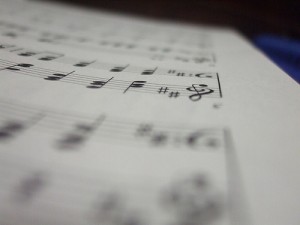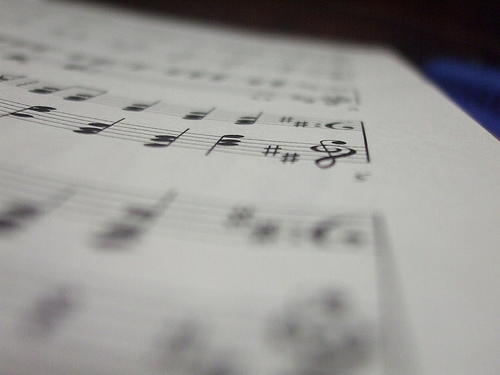 The first look at a new piece is crucial. As accomplished pianists/teachers, we automatically know to scan the piece to check the time signature, key signature, texture, composer, title, etc. before playing through a piece. Of course, we were trained to go through those steps before sightreading through a piece.
The first look at a new piece is crucial. As accomplished pianists/teachers, we automatically know to scan the piece to check the time signature, key signature, texture, composer, title, etc. before playing through a piece. Of course, we were trained to go through those steps before sightreading through a piece.
Before having students sightread, what do you say/do with them to introduce a new piece? I’d love to hear your ideas.
Here’s some things I’ve tried:
- Scan the piece before playing it. Ask the student what s/he notices about the piece. Together, look for key/time signature changes, places where the hand(s) move to other registers on the keyboard, etc. Ask the student specific questions: “Do you see anywhere else in this piece where this pattern/theme occurs?” or “Can you point to all the places where there is an interval of a fifth?”
- Count and clap the rhythm of the piece, while singing the pitches (with your help). I’ve found this to be very helpful with young beginner students who are not yet accustomed to sight-reading. The rhythm practice is always beneficial – but interestingly enough, I’ve found that singing the pitches helps them learn how to “hear” the pitches in their head when looking at a sheet of music (thus it is an ear training exercise too). It also helps students get an idea of what the piece sounds like.
- Discuss the piece’s contextual background. This involves talking about the title/subject of the piece, the composer of the piece, and/or the historical background of the piece (i.e., what period of musical history was it written). This mostly applies to classical pieces, but it may also work well with pieces that have a historical subject or reference (e.g., a minuet).
- Discuss the compositional techniques and composer’s intentions. For example, if a piece is about a popcorn, we will discuss how we can create the right mood and energy level to create the effect of popcorn popping. We would also discuss how the composer used certain articulations, note values, dynamics, etc., to help create that effect. For another example: the Primer level of the Faber Piano Adventures has a piece called “Copy Cat.” We first establish what it means to be a copycat, and then we look at the piece to find where the “copying” occurs. With beginner/elementary level pieces, I will often use the title/subject of the piece and its corresponding illustration as a launching point for discussing certains aspects of the piece.
Going through one or more steps such as these with the student helps establish good habits towards becoming a better sightreader. As a bonus, discussing with the student things like the contextual background and the compositional techniques of the piece may help them get excited about practicing the piece at home. How do you introduce new pieces to students?
Photo credit: John… in 3D | CC 2.0



I’ve learned with my beginner students that it makes a huge difference for them to reflect on the title, taking into consideration the articulation and dynamic markings. They play with so much more purpose and enthusiasm! One of my students has benefited from being called a “Music Detective”. He usually has trouble with knowing where to look, but as soon as he’s given this new identity, an imaginary magnifying glass comes out and he zeroes in on the first measure; he’ll often tell me the time signature, dynamics, and which hand is playing what within one breath!
Hi Joy, how do you teach them to sing the pitches? This would be a kind of sight-singing, wouldn’t it? Do you use a movable do re mi?